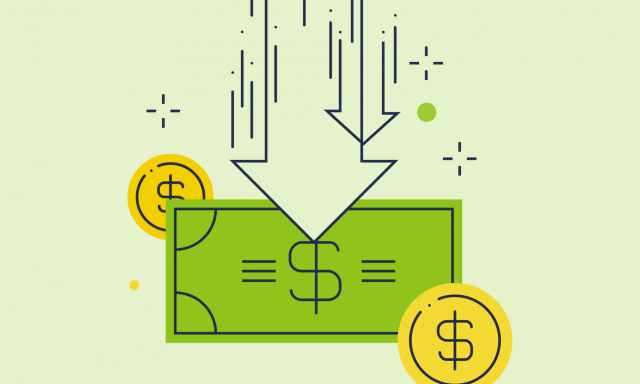

 Article
Article

 Does fiscal stimulus raise interest rates and tighten credit markets, as theoretical models of the macroeconmy predict? New research shows what the real effect of government spending is on the U.S. economy — and what high levels of inequality have to do with the interest rate response to fiscal stimulus.
Does fiscal stimulus raise interest rates and tighten credit markets, as theoretical models of the macroeconmy predict? New research shows what the real effect of government spending is on the U.S. economy — and what high levels of inequality have to do with the interest rate response to fiscal stimulus.

Insights from
Written by
News headlines have noted a slowing U.S. economy despite some of the highest fiscal stimulus activity in American history in recent years.1 The situation begs the question: What is the real effect of government spending on the American economy? A traditional concern with increased government spending is that it increases interest rates, thereby reducing investment and future economic growth. This concern is based on the predictions of theoretical models of the macroeconomy, which to date have uniformly predicted that government spending tightens credit markets.
Despite this theoretical consensus, there is little evidence that government spending actually raises interest rates in the United States or other advanced economies. To the contrary, evidence from the U.S. and U.K. suggests that government spending lowers interest rates.2
Darden Professor Daniel Murphy and colleagues formerly or currently associated with UVA — Jorge Miranda-Pinto, Kieran James Walsh and Eric R. Young — propose a new theory to help explain how interest rates can actually fall in response to increases in government spending. They first document how interest rates respond across high-income countries. Consistent with prior evidence, they find that the interest rate response to fiscal stimulus (what they refer to as the IRRF) is negative in the U.S. The IRRF is also negative in about half of high-income countries that are members of the Organization for Economic Cooperation and Development (OECD). It is positive in the other half.
Why is the IRRF positive in some counties (consistent with standard theory) but not in others? To address this question, they examine a range of country-level factors and find that high consumer debt and high inequality are associated with a lower IRRF. Their result is especially surprising, since prior theoretical work suggests that high debt should be associated with additional pressure on credit markets in response to government spending and a higher IRRF.
To explain this otherwise puzzling relationship, the authors appeal to a companion paper, “A Model of Expenditure Shocks,”3 which proposes a model whereby many high-debt, low-income households save rather than spend additional income. They show that such a model can explain household’s consumption and income patterns.
Murphy and his colleagues looked at data spanning two decades, primarily from countries in the OECD, supplemented by additional data samples. They specifically zeroed in on the relationship between IRRF and income inequality measures for each country. The measure of inequality is the ratio of the income of the richest tenth of the population to the income of the poorest tenth — figures provided by the OECD. The researchers then took the average of this ratio over the 2001–13 period, showing the United States to be the most unequal country, while Denmark had the greatest equality.
The researchers laid these data side by side with the government bond yields over the period 1987–20074 to reveal an inverse relationship between income inequality and IRRF (as measured by government bond yield response to fiscal shocks). In other words, in countries with high income inequality, fiscal stimuli (like tax rebates) generate smaller increases in interest rates than in countries with greater income equality. A little more than half of the 28 studied countries had a negative interest-rate response to fiscal stimulus.
Why might the behavior of high-debt households matter for understanding the IRRF? The authors develop a general equilibrium model — one in which many aspects of the economy are interrelated — to formalize the intuition.
In their model:
On its own, this mechanism does not explain why interest rates actually fall in some countries. For that, the authors appeal to insights from some authors’ other theoretical work on the existence of slack — that is, underutilized resources — in the economy.[5] The authors show that combining the redistribution effect with theories featuring economic slack can explain the negative IRRF.
Daniel Murphy co-authored “Saving Constraints, Debt, and the Credit Market Response to Fiscal Stimulus” with Jorge Miranda-Pinto of the University of Queensland, Kieran James Walsh of the University of California, Santa Barbara, and Eric R. Young of the University of Virginia.
An expert in economics and public policy, Murphy researches the nature of consumer demand and its implications for market outcomes. His work addresses international issues and macroeconomics, including the determinants of cross-country price differences, the causes of fluctuations in the price of crude oil and the consequences of asymmetric economic growth.
Prior to joining Darden’s Global Economies and Markets area in 2013, Murphy was a National Hunger Fellow and research associate at the Urban Institute.
B.S., University of Notre Dame; M.A., Ph.D., University of Michigan
The Real Effect of Fiscal Stimulus: Inequality, Interest Rates and Beyond
Share